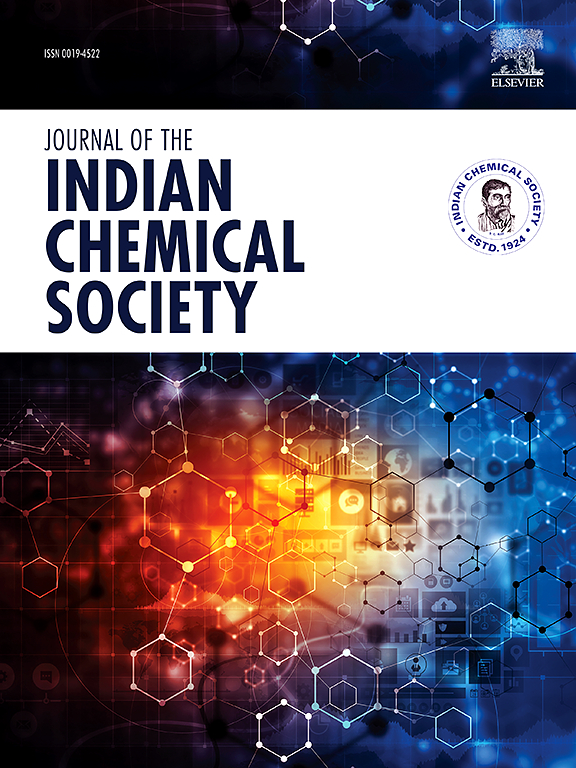利用铝土矿催化剂热解聚丙烯废料生产富氢气体产品:各种产品的产率分析
IF 3.2
4区 化学
Q2 CHEMISTRY, MULTIDISCIPLINARY
引用次数: 0
摘要
研究了在有催化剂和无催化剂的情况下,从聚丙烯废料(PPW)热解中提取出产率高的优质热解油(PO)和富氢气体混合物。在低成本铝土矿中存在金属氧化物混合物的情况下,对其对PO的质量和数量以及合成气组成的催化活性进行了实验研究。在热重(TGA)研究中发现,催化剂对PPW的还原温度(约10℃)降解具有正选择性。采用不同催化剂比例、温度(525°C - 600°C)和加热速率(5,10和15°C/min)的PPW进行间歇反应器研究,以量化工艺条件对最终产品特性的影响,并确定最佳工艺参数。热解温度为575℃,催化剂用量为10%,热解速率为15℃/min。相应的PO和气态产物收率分别为75.14%和17.16%。通过FTIR和GC-MS分析发现,除了芳烃外,PO中还含有较高浓度的轻碳氢化合物,即2,4 -二甲基庚烷、2,6 -二甲基壬烷和2,4 -二甲基-1-庚烯,适用于汽油燃料。气相产物气相色谱测试表明,与单独热热解相比,铝土矿的存在显著提高了气相产物中氢的回收率。在最佳条件下,气态产物中氢含量达到9.8%,达到了研究的主要目的。铝土矿具有很好的催化活性,使该工艺可用于PPW的富氢气体产品和汽油范围PO。该研究通过促进科学利用塑料垃圾,将其转化为增值的清洁燃料,支持循环经济活动。本文章由计算机程序翻译,如有差异,请以英文原文为准。
Production of hydrogen-rich gaseous product from pyrolysis of polypropylene wastes using bauxite ore catalyst: yield analysis of various products
The article investigates the extraction of superior-quality pyrolytic oil (PO) with considerable yield and hydrogen-rich gaseous mixtures from the pyrolysis of polypropylene waste (PPW) with and without a catalyst. Considering the presence of a mixture of metal oxides in low-cost bauxite ore, its catalytic activity towards the quality and quantity of PO and the composition of syngas has been explored experimentally. A positive selectivity towards the reduced temperature (about 10 °C) degradation of PPW with catalysts has been identified during the thermogravimetric (TGA) study. A batch reactor study was conducted with PPW with varied proportions of catalyst, temperatures (525 °C–600 °C), and heating rates (5, 10, and 15 °C/min) to quantify the effects of process conditions on end products’ characteristics and to identify the optimal process parameters. The pyrolysis temperature of 575 °C at 15 °C/min with 10 % catalyst produced the superior quality PO. The corresponding yields of PO and gaseous products were 75.14 % and 17.16 %, respectively. The analysis of PO by FTIR and GC-MS showed higher concentrations of lighter hydrocarbons suitable for gasoline range fuel, namely 2, 4-dimethyl heptane, 2, 6-dimethyl-nonane, and 2, 4-dimethyl-1-heptene, in addition to aromatics. The GC test of gaseous products showed that the presence of bauxite ore significantly enhanced the hydrogen recovery in gaseous products compared to thermal pyrolysis alone. Under optimum conditions, the hydrogen content in the gaseous product reached up to 9.8 %, fulfilling the primary aim of the study. Bauxite ore has a promising catalytic activity, making the process sustainable for hydrogen-rich gaseous products and gasoline range PO from PPW. The study backs circular economy activities by promoting the scientific use of plastic garbage for converting it into value-added clean fuels.
求助全文
通过发布文献求助,成功后即可免费获取论文全文。
去求助
来源期刊
CiteScore
3.50
自引率
7.70%
发文量
492
审稿时长
3-8 weeks
期刊介绍:
The Journal of the Indian Chemical Society publishes original, fundamental, theorical, experimental research work of highest quality in all areas of chemistry, biochemistry, medicinal chemistry, electrochemistry, agrochemistry, chemical engineering and technology, food chemistry, environmental chemistry, etc.

 求助内容:
求助内容: 应助结果提醒方式:
应助结果提醒方式:


